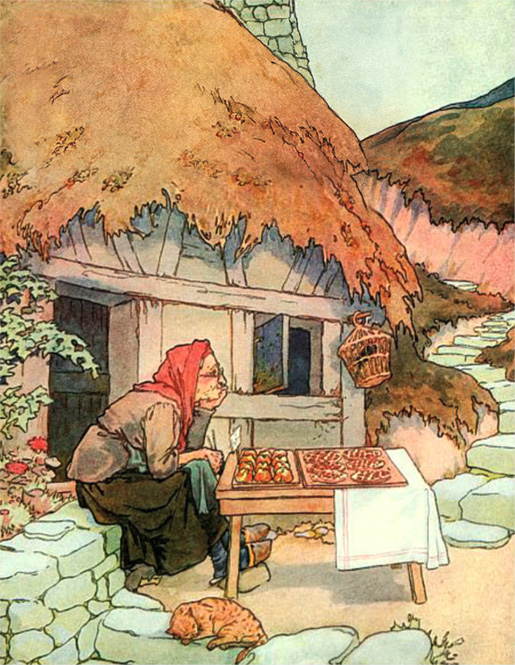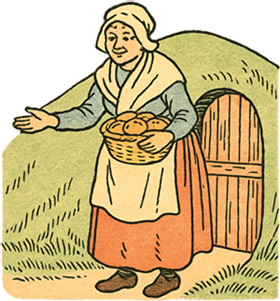There Was an Old Woman Lived under the Hill
There was an old woman lived under the hill,
And if she's not gone she lives there still.
Baked apples she sold, and cranberry pies,
And she's the old woman that never told lies.

This little rhyme looks like nothing at first glance. Just four lines, barely a story. But it’s old — older than most nursery pieces — and it has a strange history that stretches from Shakespeare’s stage to Victorian moralizing.
Versions of the Rhyme
The earliest version from 1714:
There was an old woman
Liv'd under a hill,
And if she ben't gone,
She lives there still.
By the nineteenth century, editors decided it needed padding. One expanded version goes:
There was an old woman lived under the hill,
And if she’s not gone she lives there still.
Baked apples she sold, and cranberry pies,
And she’s the old woman that never told lies.
Now we have food and a moral — very Victorian.
There’s also a cousin rhyme that wandered in through Gammer Gurton’s Garland (1810):
Pillycock, Pillycock, sate on a hill,
If he’s not gone—he sits there still.
That odd name shows up in Shakespeare’s King Lear (1606). Edgar, pretending to be mad, mutters “Pillycock sat on Pillycock hill.” Which means some version of this structure was already in people’s heads back then.
Origins
The rhyme first shows up in print in 1714 in The Academy of Complements, not as a nursery verse but as part of a catch song — a round sung by adults. By 1744 it made its way into Tommy Thumb’s Pretty Song Book, which is the first known nursery rhyme collection.
An editor in the eighteenth century, thought to be Oliver Goldsmith, couldn’t resist commenting on it: “This is a self-evident Proposition… nobody will presume to contradict this.” He’s basically laughing at the obviousness of it.
Meaning
The original couplet has no lesson. It’s a tautology dressed up as rhyme. “If she’s not gone, she lives there still.” It’s circular logic, and that’s the joke.
 Later, the rhyme was softened. The old woman sells pies and apples, and, importantly, she “never told lies.” Now it’s useful for children: a picture of homely honesty instead of logical nonsense.
Later, the rhyme was softened. The old woman sells pies and apples, and, importantly, she “never told lies.” Now it’s useful for children: a picture of homely honesty instead of logical nonsense.
“Under the hill” was a loaded phrase in British folklore. People talked about fairies living under hills, hidden folk, and strange dwellings underground. Whether the rhyme borrowed that idea or not, we can’t be sure, but the wording would have carried a little weight for early audiences. It wasn’t just a hill.
It’s not a rhyme you’ll hear in nurseries now. It slipped behind louder verses like Old Mother Hubbard or There Was an Old Woman Who Lived in a Shoe. But it’s older than many of them, and more curious. From a stage whisper in King Lear to a Victorian lady peddling pies, the old woman under the hill has been around a long time. And if she’s not gone, well, she lives there still.

